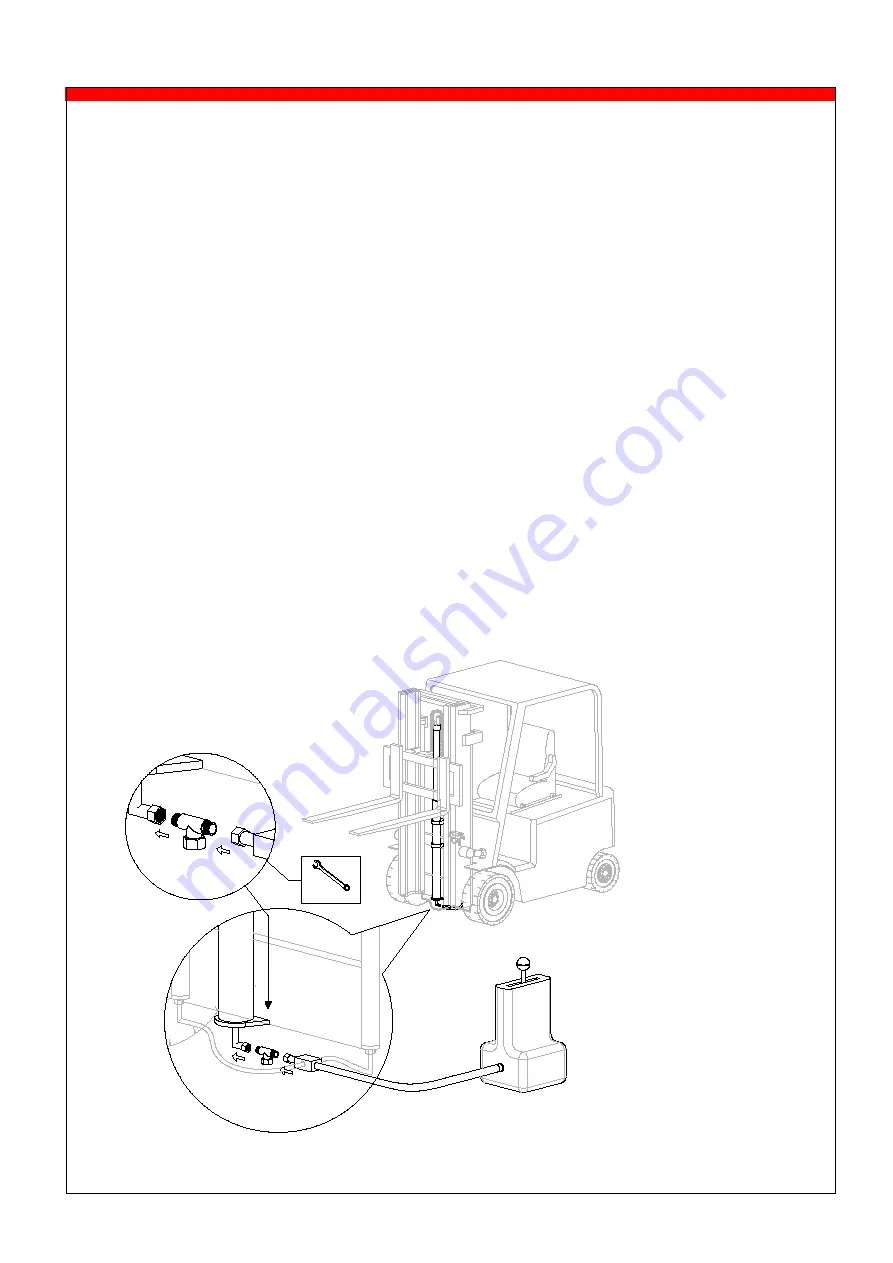
USER MANUAL
– RCS
12
S19
1.
2.
7.
System setup
7.1
Installing the T-part
- Ensure that there is no pressure on the high-pressure hose.
- The sensor is mounted with a T-piece in the high-pressure hose, between the valves and
the cylinder
.
- The connection on the sensor is G¼” BSP male.
- Mount the T-piece so that the sensor and the cable connection are pointing downwards.
This will prevent air getting into the sensor.
- Protect the cable against moving, sharp or warm parts with the supplied protective cover.
Choose a place where you can mount the sensor:
- Mount the sensor in the pressure hose that steers the cylinder. In most cases there is one
cylinder which moves the carriage plate. The sensor is mounted as close to the cylinder
as possible.
- When the pressure hose splits to multiple cylinders, the sensor has to be mounted before
the split.
- Do not mount the sensor too close to the engine. Large differences in temperature can
influence the accuracy of the system.
- If the truck is used intensively, a piece of pipe or hose of ± 50 cm can be mounted
between the sensor and the T-piece. The sensor is sensitive to temperature differences.
If the moving oil becomes warm, the standing oil in this pipe or hose will remain cool.
The sensor will not be effected by temperature differences.
- Place the sensor close to the cylinder. There is often more room there and it is easier to
reach.
- Choose, if possible, a place to mount the sensor where there are the least steering and
safety valves between the sensor and the cylinder.
Type A: 1 central cylinder
Mount the T-piece into
the delivery pipe of the
truck near the cylinder
for the diversion of the
pressure to the
RCS.



























